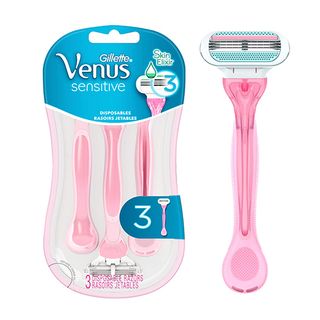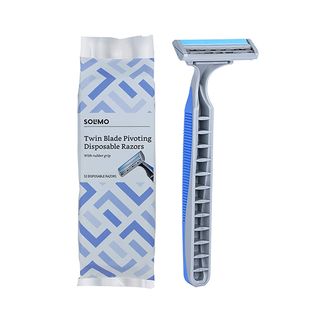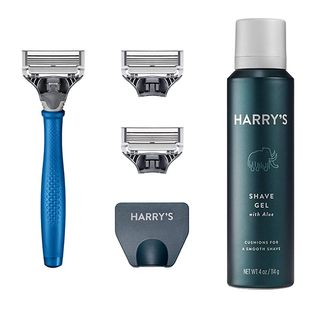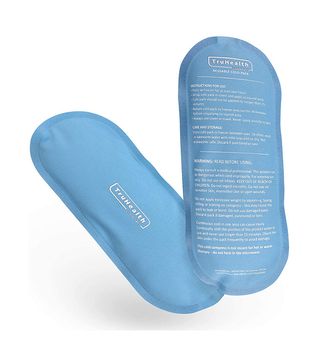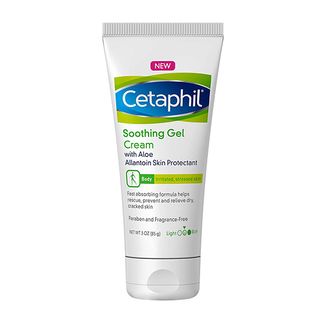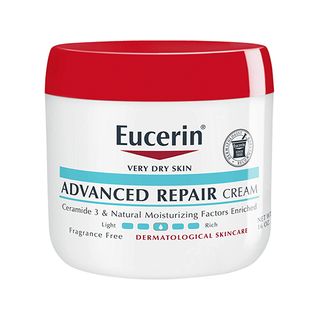Now Is the Perfect Time to Try At-Home Laser Hair Removal—These Ones Work
Some people really swear by laser hair removal, even a lot of our own editors. It might be a bit of a time commitment and can be on the pricier side, but the justification here is that if you go through the process once, you won't have to keep spending money on razors or expensive monthly waxes. While you might have to get some maintenance treatments, they probably won't be as often. Sounds pretty good, right?
But for me, the word laser and thinking of one getting close to my body is a bit intimidating. So I did a bit more research on what exactly happens during the treatment. The Mayo Clinic sums up what goes down during laser hair removal: "A laser emits a light that is absorbed by the pigment (melanin) in the hair. The light energy is converted to heat, which damages the tube-shaped sacs within the skin (hair follicles) that produce hairs. This damage inhibits or delays future hair growth." It's also worth noting that the Clinic says some treatments delay hair growth but do not permanently remove hair, so follow-ups are needed.
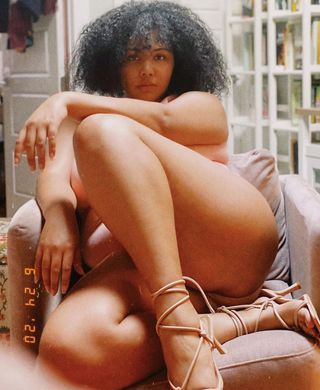
While more laser hair removal treatments are done in a dermatologist's office, there are now at-home devices that let you DIY it, so to speak, from the comfort of your own home. Much like thinking generally about laser hair removal made me a bit nervous, having to do it myself at home? I had some serious doubts.
So I went to an expert source, Jennifer Herrmann, MD, FAAD, of Moy, Fincher, Chipps, to find out if these devices really work and how to use them safely. Herrmann said that while they do work for the most part, you won't get quick or as efficient results as you would in-office.
"I think the most important thing to remember is that these are low-energy devices to increase their safety profile," she explains. "To see results, many treatments are required, and for some types of hair (finer and lighter in color), the devices may not be strong enough to provide adequate results. In-office treatments can be tailored to safely treat nearly all skin types, and typically five or six sessions lead to a tremendous reduction of hair. For those looking for the most efficient method to target hair or for those with lighter and finer hair, in-office treatments are likely a more practical option. In-office treatments can also typically be done more easily, especially in hard-to-reach areas where self-treatment is challenging."

How to Choose a Device
When researching devices, Herrmann says you should look into specifics because many aren't suitable for darker skin or red or blonde hair. She adds that none work on white hair. And you should think about the area you're going to use the device on.
"Depending on the area you wish to target, some have larger or smaller treatment handpieces," she explains. "If you're aiming at hairs on the lip, for instance, a smaller device with a precise tip for targeting this small area is preferred. Depending on your own skin type, it's also important to look at the device's safety profile and what skin tones it's safe for. Most of these devices are actually not lasers but based on IPL (intense pulsed light) technology, which can't be used on dark skin safely."

Application Tips
Don't forget to prep the area before you start lasering. Herrmann says you should clean the skin so there's no makeup, lotion, or sunscreen, which can absorb the device's heat and risk skin burns. And this might seem backward because you're getting rid of hair with the device, but you should actually shave before.
"Excess visible hair can absorb heat above the skin, making the treatment less effective and also risking burns," she explains. "Plucking and waxing should be avoided as these treatments remove the entire hair. The root of the hair must be in the skin so that it can serve as a target for the device's energy. When the device is fired, the light energy is transformed into heat when it interacts with the pigment cells (what gives the hair its color) in the hair. This heat then damages the cells that grow the hair, leading to overall hair reduction after multiple treatments target hairs in different phases of the growing cycle."
Most importantly, read and follow the device's instructions. And don't overdo an area. "In general, it's important to avoid stacking multiple pulses in a single area, as too much isolated energy can cause burns," Herrmann adds.
You shouldn't experience that much irritation if you use the device correctly, but if you do, she says a cold compress or ice packs can reduce discomfort. But if redness, blistering, or pain persist, you should make an appointment with your dermatologist.
Top-Reviewed Laser Hair Removal Devices
Ready to try some at-home lasering? We've rounded up the best-reviewed devices below:
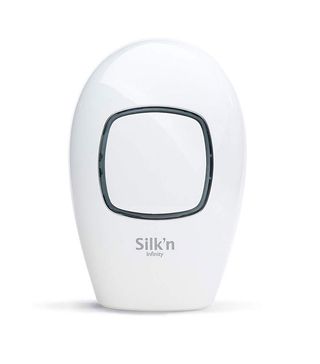
The Silk'n Infinity uses IPL technology to remove unwanted hair on both men and women. It's supposed to last you a lifetime and doesn't require refill cartridges. You should start to see results after three to four sessions. One Amazon reviewer wrote, "I got my device a few weeks ago and used it immediately! I put it on the highest setting which I was SHOCKED to find out was completely pain free. It didn't hurt me one bit the Infinity just felt a little warm... I'm already seeing my hair thinning out in certain places! So happy I don't have to spend thousands of dollars for hair removal and I can do this in private!"
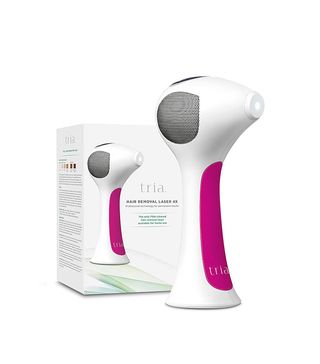
Another FDA-cleared device, the Tria uses the same technology found in dermatologists' offices. And it's supposed to offer three times more energy than other devices on the market. Reviewers caution that it does hurt a bit and the battery life isn't great, but they also say it works well. An Amazon customer wrote, "I purchased the Tria mostly to use on the bikini area and chin. I have very coarse, fast-growing hair—have to shave my legs every day. The Tria really worked for me. I did have to continue the treatments for a longer duration than the instructions say, but I could tell that it was working as the hair grew back slower and thinner each time."
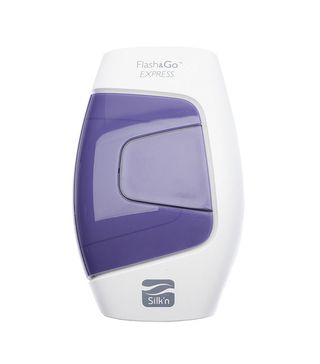
You'll be able to do a full-body treatment in less than 20 minutes with this device. It doesn't require refill cartridges, and it comes with five adjustable energy levels. An Ulta reviewer wrote, "After eight treatments, I am definitely seeing both less hair AND slowed growth. I use the device on my armpits, legs, and bikini area. It takes me about 20 minutes every two weeks. I look forward to continued results."
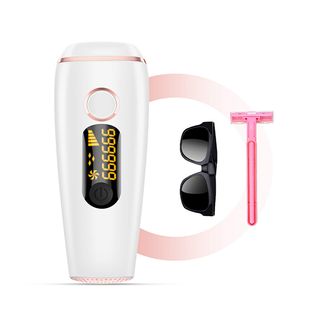
This device has five different energy modes to adapt to different skin. It's good for 999,999 light pulses, so you won't need a refill cartridge. An Amazon customer wrote, "I have virtually no armpit hair now and my facial hair is very thin now, and has stopped growing in areas under my jaw/on my neck, and the mustache area has thinned out dramatically. The cheeks are thin and grow very slowly, overall it's working very well."
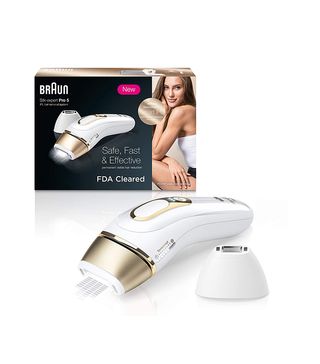
This IPL device comes with technology that will detect your skin tone and adapt to it. It comes with three modes—normal, gentle, and extra gentle—so you can tailor it to your needs and sensitivity level. It also comes with a small razor for prep. An Amazon customer said, "Once I started using this, I could see the hair coming in thinner. It was a miracle! There are patches on my legs where there is no hair growing in at all! I don't mind if this doesn't get rid of all the hair on my legs, but making it lighter and thinner is a miracle in my book. I don't feel like I have to shave ever day anymore. If you have time and patience, I highly recommend investing in this and giving it a try."

On average with this device, users will see hair reduction after three to four treatments, and 94% permanent hair reduction after seven to nine treatments. It comes with a capacity of 300,000 light pulses and five energy levels. Plus, the handheld design makes it easy to maneuver. An Amazon reviewer wrote, "Amazing. Being that I got the recessive Italian genes I have struggled with very thick very dark hair all my life. I have very fair skin and very dark coarse hair on my legs and underarms. [I've] been using for over a month and now some of my hair isn't growing at all and in other parts, the hair that is still coming in is super fine."

The Deess device is suitable for use on the face, underarms, bikini area, and legs. It also has unlimited flashes for a lifetime of treatments. One Amazon reviewer reports, "The cool shot is amazing. The auto flash is fast, so it’s quick and easy. I also love the skin rejuvenate light. It’s currently really helping with the hyperpigmentation from old acne spots...for that alone I feel this was worth the buy!"

This product is FDA-certified and comes with 999,900 flashes. It utilizes long light wave technology to really reach hair at the root. One Amazon review says, "I want my hair gone as quickly as possible so I use the highest level. It is fairly pain free which is nice. I've been using mine consistently for a month and it seems that my hair is coming in thinner!"
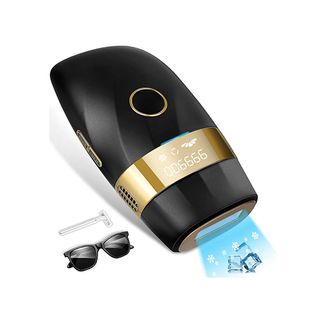
This device is a bit more unique because of its built-in cooling technology. It works to quickly relieve any pain or burning caused by higher energy settings. It also comes with its own razor. One Amazon reviewer states, "The device is so easy to use and follow. The fan is not too loud and the process doesn't take long at all."
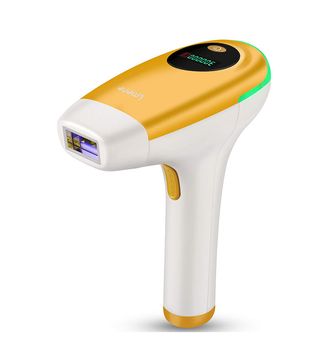
You can use this device on your arms, legs, bikini line, and back, but it's not recommended for use on the face. It has a capacity of 300,000 light pulses and five energy levels, like other devices on this list. On average, users could see full results in eight weeks. An Amazon review reads, "After my third treatment, I could see a noticeably big difference in the amount of hair and thickness of the hair. I am very happy with the amount of hair that has been permanently removed and the softness of the hair I do have left. The results are amazing and I am so glad I made the decision to buy this IPL."
Post Laser Hair Removal Care:
If you experience any redness or irritation after using your laser hair removal device, try a soothing aloe gel or calming moisturizer.
Up Next: The Dos and Don'ts of Waxing at Home—so It Isn't an Epic Fail.
This article was originally published at an earlier date and has been updated.
Sarah is lifestyle writer and editor with over 10 years of experience covering health and wellness, interior design, food, beauty, and tech. Born and raised in Los Angeles, she attended New York University and lived in New York for 12 years before returning to L.A. in 2019.
In addition to her work on THE/THIRTY and Who What Wear, she held editor roles at Apartment Therapy, Real Simple, House Beautiful, Elle Decor, and The Bump (sister site of The Knot).
She has a passion for health and wellness, but she especially loves writing about mental health. Her self-care routine consists of five things: a good workout, “me” time on the regular, an intriguing book/podcast/playlist to unwind after a long day, naps, and decorating her home.
